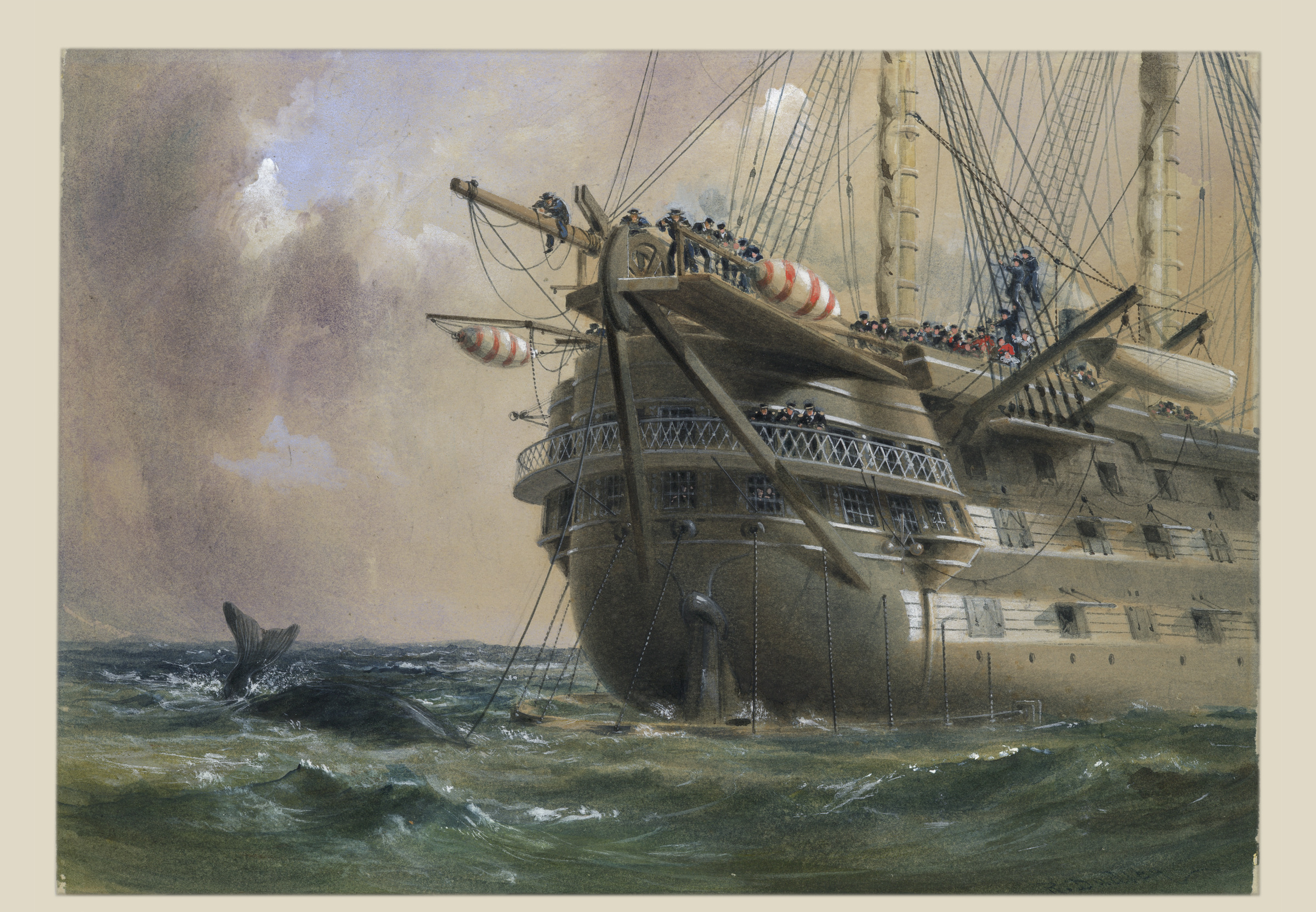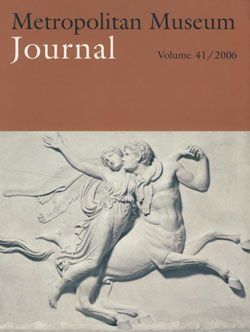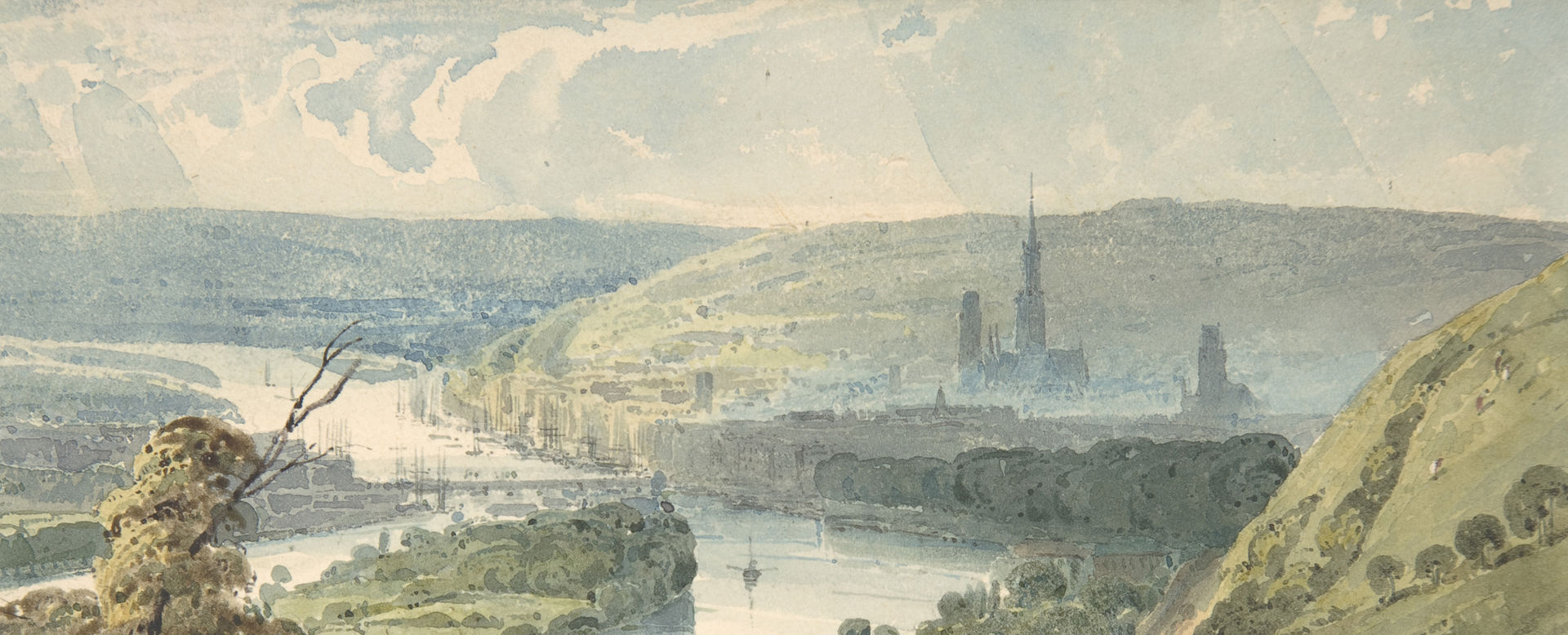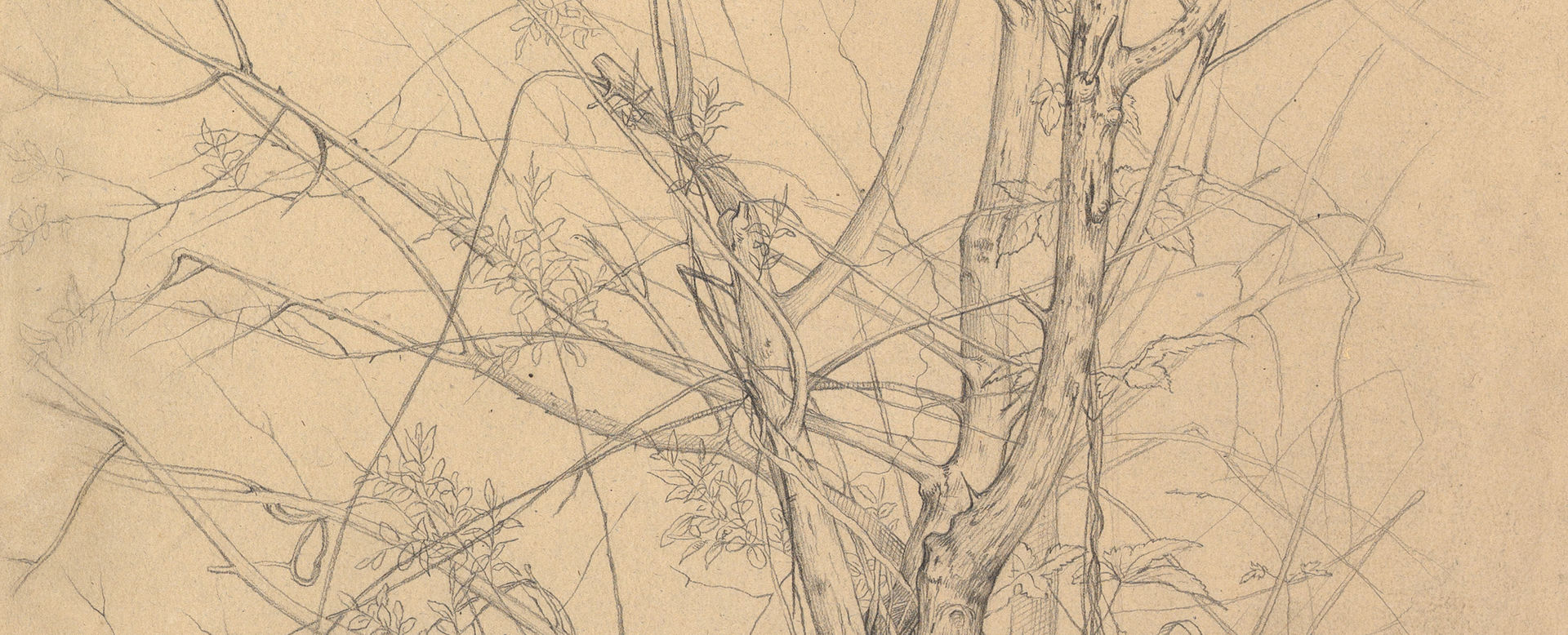In the Bows of the Great Eastern: The Cable Broken and Lost, Preparing to Grapple, August 2nd, 1865
Robert Charles Dudley British
Not on view
One of the 19th century's great technological achievements was to lay a telegraphic cable beneath the Atlantic, allowing messages to speed back and forth between North America and Europe in minutes, rather than ten or twelve days by steamer. An initially successful attempt in 1858, led by Cyrus W. Field and financed by the Atlantic Telegraph Company, failed after three weeks. Two working cables were finally laid in July and September 1866, the result of repeated efforts by the indefatigable Field, a cadre of engineers, technicians, and sailors, two groups of financial backers, and significant help from the British and United States navies. Dudley documented the process in a series of watercolors and oils, here showing the Great Eastern, a huge passenger steamer by Isambard Kingdom Brunel then recommissioned to serve the cable effort, lowering a grappling hook into the water after a cable broke and was lost at sea on August 2, 1865. Initial retrievalattempts proved fruitless, but the following summer the cable was located, brought up from the seabed, spliced, and laid on to Newfoundland. In 1892 Field donated art works by Dudley, commemorative medals, memorabilia, and specimens of cable to the Museum.
This image cannot be enlarged, viewed at full screen, or downloaded.
This artwork is meant to be viewed from right to left. Scroll left to view more.






